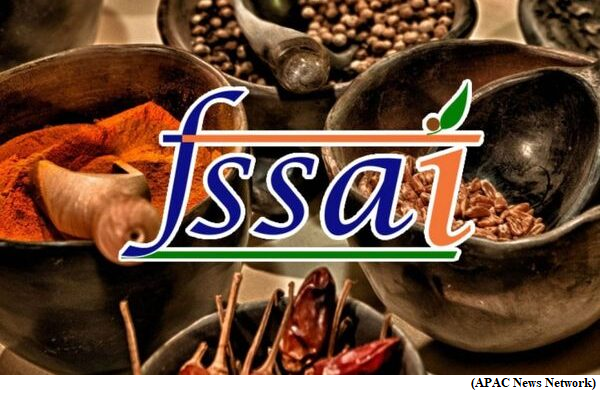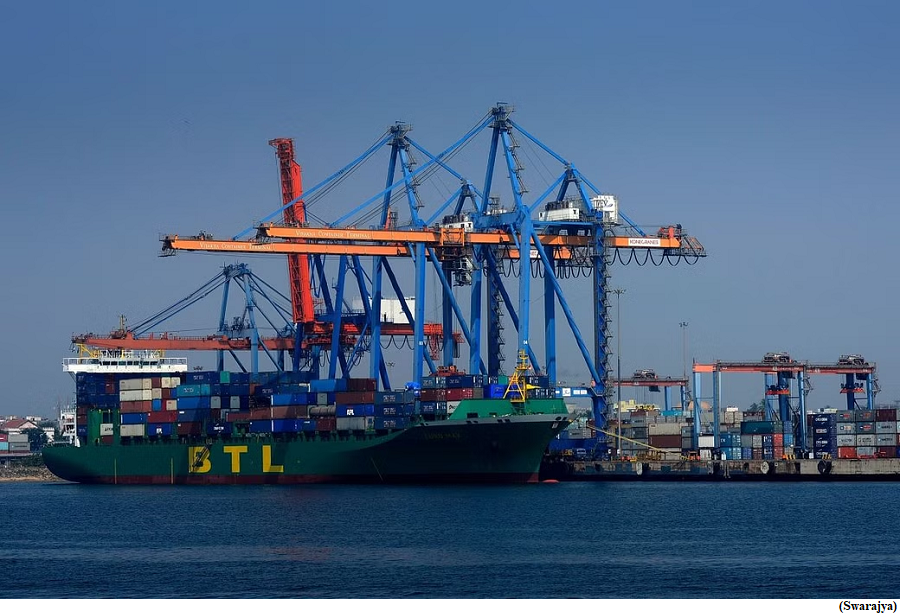Initiatives taken by MoCA to promote sustainable development in the aviation sector (GS Paper 3, Economy)

Why in news?
- India's aviation sector has experienced rapid growth in recent years, leading to an increase in carbon emissions from airports.
- Ministry of Civil Aviation (MoCA) has taken a number of initiatives to promote sustainable development in the aviation sector and reduce carbon emissions at airports.
Green House Gas emission from airports can be categorized in three scopes:
- As per analysis, Scope 1 contributes 5% and Scope 2 contributes to 95% to the total direct emission from airports.
- Scope 1: Emissions from airport-owned or controlled sources. Examples include airport-owned power plants that burn fossil fuel, conventional vehicles that use gasoline, or conventional GSE that use diesel fuel.
- Scope 2: Indirect emissions from the consumption of purchased energy (electricity, heat, etc.)
- Scope 3: Indirect emissions that the airport does not control but can influence. Examples include tenant emissions, on-airport aircraft emissions (typically, after an aircraft is parked on the apron), emissions from passenger vehicles arriving or departing the airport, and emissions from waste disposal and processing.
Green airports:
- A green airport is an airport that has implemented sustainable practices to reduce its environmental impact and promote sustainable development.
- Green airports aim to minimize their carbon footprint, conserve energy & water resources, reduce waste and emissions.
Initiatives taken by MoCA to sensitize stakeholders:
- MoCA organized knowledge sharing sessions to standardize Carbon Accounting and Reporting framework of Indian Airports as well as to create awareness on Climate Change mitigation.
- Advised all the operational Brownfield Airports and upcoming Greenfield Airports operators to:
- Work towards achieving Carbon Neutrality & Net Zero which inter-alia includes use of 100% Green Energy.
- Get Accreditation by Airports Council International (ACI)/ISO 14064 through empaneled verifiers.
- Adopt Carbon Mitigation Measures as well as Carbon Management plans with milestones.
- Advised all the Chief Secretaries/Administrators to ensure Carbon Emission reduction measures and achieving Net Zero target ab-initio by incorporating design/standards in the Greenfield airport development proposal, DPR, Airport Master plan etc. before sending the same to MoCA.
- Advised Airports Economic Regulatory Authority to consider the cost associated with the Green Energy use for Airport Tariff Determination.
Steps taken by the MoCA for encouraging usage of Sustainable Aviation Fuel (SAF):
- ICAO has launched Carbon Offsetting & Reduction Scheme for Aviation (CORSIA) to reduce emissions from international aviation which require offsetting of emissions above a baseline value. CORSIA Scheme is envisaged in 3 phases:
- Pilot Phase - (2021-2023)
- First Phase - (2024-2026)
- Second Phase (2027-2035)
- Pilot and first phases are voluntary phases whereas second phase is mandatory for all the ICAO member States. Government of India has decided not to participate in the voluntary phases of CORSIA. Offsetting requirement under CORSIA for Indian carriers will start from 2027.
- Airlines can either use SAF or offset their emissions by purchasing carbon credits from ICAO approved Emissions Unit Programmes.
- In the 41st ICAO General Assembly, the baseline of CORSIA has been revised to be 85% of 2019 emissions. Also, the Individual Growth Factor (IGF) for airlines has been reduced to 0% from 20% in 2030-32 compliance cycle and to 15% from 70% in the final 2033-35 compliance cycle.
- To realize the goals of decarbonization of Aviation Sector, Ministry of Petroleum & Natural Gas constituted a Bio-Aviation Turbine Fuel (ATF) Programme Committee to take forward the Bio-ATF programme in the country to promote use of clean fuels.
- The Bio-ATF Programme Committee has submitted its report to MoP&NG for approval.
- SpiceJet, a private Indian carrier, had conducted a demonstration flight with Bombardier Q400 aircraft in August 2018 using bio-fuel blended with ATF (in the ratio of 25:75) in one engine.
- MoCA and DGCA have held meetings with the Indian carriers to sensitize them regarding the impact of CORSIA on airlines once the mandatory phase starts and the resultant need to be prepared for the same.
- As on date, Airbus and Boeing aircraft are capable of flying with up to a 50% blend of SAF. Both the manufacturers aim to enable 100% SAF capability by 2030.
- Clean Skies for Tomorrow (CST) is an initiative of the World Economic Forum to help the aviation sector move towards net-zero emissions by accelerating the use of sustainable aviation fuels. Representative of CST Coalition is a member of the Bio-ATF Programme Committee. Airlines, airports, SAF producers and OEMs are part of the CST Coalition.
Initiatives by MoCA taken for reduction of Green House Gases (GHG) in airspace:
Flexible Use of Airspace (FUA):
- Due to Flexible Use of Airspace, cumulative reduction in carbon emission of approx. 90,000 tCO2 in addition to cumulative saving of approx. INR 400 crore on ATF expenses has been achieved since its implementation in August, 2020.
- Further, about 128 CDRs (Conditional Routes) have been promulgated since implementation of FUA in consultation & coordination with IAF, MoD.
Implementation of Central Air Traffic Flow Management (C-ATFM):
- This management technique is helping AAI to manage air traffic flows strategically in the Indian sky, which has helped to ensure reduced delays & holding and optimisation of capacity, leading to reduction in fuel consumption and GHG emissions.
- The C-ATFM system was operationalized in January 2017, India thereby becoming the 7th country in the world (after USA, Europe, Australia, South Africa, Japan and Brazil) to implement the Air Traffic Flow Control Measures across the country.
Implementation of Performance Based Navigation (PBN):
- PBN supports development of air routes / arrival-departure paths / approach procedures which help reduce/optimise track miles, descent and climb profile and thereby enhance airspace capacity.
- These measures improve operational efficiency of aircraft operations and lead to reduction in fuel consumption and GHG emissions.
Implementation of Continuous Descent Operations (CDOs):
- CDOs have been implemented to permit aircraft to maintain a very fuel-efficient arrival flight path, which helps reduce fuel consumption and noise at ground, thereby reducing GHG Emissions.
Airports Council International - Global Framework
- The Airports Council International (ACI) has launched the Airport Carbon Accreditation program, which is a global standard for carbon management at airports.
- The program helps airports to assess their carbon emissions, develop a carbon management plan, and reduce their carbon footprint.
FSSAI reconstitutes its Scientific Panels (SP) and Scientific Committee
(GS Paper 2, Health)
Why in news?
- Recently, the FSSAI reconstituted its Scientific Panels (SP) and empanelled about 200 scientific experts from different scientific organisations such as ICMR, CSIR, ICAR, NIFTEM, IIT’s and various institutes working in the area of food safety and nutrition.
- These scientists will work with FSSAI for next three years and suggest FSSAI about the scientific aspects of food safety. This will further make way to notify food standards and regulations.

About FSSAI:
- Food Safety and Standards Authority of India (FSSAI) was established under the Food Safety and Standards Act, 2006 for laying down science-based standards for articles of food for ensuring availability of safe and wholesome food for human consumption in the country.
- The Scientific Committee and the twenty-one Scientific Panels are principal scientific arms of the food authority in the standard development process.
Scientific Panels:
Scientific Committee (SC):
- The Scientific Committee (SC) is constituted by the food authority under Section 14 of the Food Safety and Standards Act, 2006 (FSS Act) and is a body consisting of six independent experts (nominated by the Food Authority and not belonging to any of the SPs) and Chairpersons of all the SPs, as members. Currently, it has a strength of 27 Members.
- The SC, as a statutory body, acts as the link between SPs and the Food Authority.
- SC mainly examines the recommendations made by each of the panel and further recommends for approval by the Food Authority. This is the highest body that is responsible for providing scientific opinion to the Food Authority.
- At the point of inception of FSSAI, Food Authority commissioned only 8 SPs. Currently, there are a total of 21 SPs that comprise 11vertical and 10 horizontal panels.
- Each of these SPs are numbered for ease of co-ordination with different other bodies.
Horizontal & Vertical Scientific Panels
- The process of development of a standard is driven by the principle of food safety and assessment of risks associated therein. A standard could be of general nature that applies to all product categories, and are often referred to as horizontal Standards.
- The horizontal standards prescribe safety requirements of food products. These standards include food additives, contaminants, toxins, antibiotic residues, pesticide residues, microbiological parameters, packaging and labelling requirements.
- Similarly, the standards that are specific to a product or a product category are referred to as vertical standards.
- The vertical standards mainly prescribe identity and quality to a product/product category. The standard development mainly involves SPs who deliberate and develop the base standard; and, these are further validated by the SC before being finally approved by the Food Authority.
India aims at becoming ‘Global Hub for Green Ship’ building by 2030
(GS Paper 3, Economy)
Why in news?
- Recently, the Union Minister of Ports, Shipping & Waterways (MoPSW) has said India aims at becoming ‘Global Hub for Green Ship’ building by 2030 with launch of Green Tug Transition Programme(GTTP).
Green Tugs:
Highlights on NCoEGPS
- Country’s first National Centre of Excellence in Green Port & Shipping (NCoEGPS) is the result of a collaboration between the Ministry of Ports, Shipping & Waterways, Government of India and the Energy and Resources Institute (TERI).
- With the NCoEGPS acting as the Nodal entity for the industry, the plan is afoot to make India as the ‘Global hub for building Green Ships’ by 2030.
- With these initiatives, the Centre is aimed at playing a crucial role towards achievement of UN’s Sustainable Development Goal (SDG 14) to sustainably manage and protect marine & coastal ecosystems from pollution, conservation & sustainable use of ocean based resources.
- The Centre will engage in developing the regulatory framework and alternative technology adoption roadmap for green shipping in India. The NCoEGPS housed within the TERI complex in Gurugram will work towards meeting the obligations under the Paris Agreement.
Maritime Vision Document 2030:
- The PM Gati Shakti - National Master Plan for Multi Modal Connectivity along with the Green Ports initiative has already accelerated the development of green logistics supply chain in the country.
- The ports have also aimed to reduce Carbon emissions per ton of cargo handled by 30% by 2030.
- The Maritime Vision Document 2030, released by Prime Minister is a 10 Year blueprint on India’s vision of a sustainable Maritime sector and vibrant blue economy.
- India has been selected as the first country under the IMO Green Voyage 2050 project to conduct a pilot project related to Green Shipping.
- The Ministry has already identified Paradip Port, Deendayal Port and V.O. Chidambaram Port to developed as Hydrogen Hubs - capable of handling, storing and generation of green hydrogen by 2030.
- With the development of these infrastructure, India will be able to export Green Hydrogen, produced in the country using renewable sources, with the support of NCoEGPS in technology and market leadership.
Significance of NCoEGPS:
- NCoEGPS will act as a technological arm of MoPSW for providing the needed support on Policy, Research and Cooperation on Green Shipping areas for Ports, DG Shipping, CSL and other institutions under the umbrella of MoPSW.
- The Center will be a host of several technological arms to support the port and shipping sector and will provide solutions to a variety of problems being faced in the industry through scientific research.
- It will also carry out valuable education, applied research and technology transfer in maritime transportation at the local, regional, national and International levels.
- It will focus on the following areas like energy management, emission management, Sustainable Maritime Operations etc.
- The NCoEGPS aims at empowering ‘Make in India’ in Port, Coastal and Inland water transport, and Engineering by developing state of art technologies and application products.
- It will enable fast-track innovations in order to provide most appropriate solutions to various challenges in these sectors. The Centre also aims to create a pool of competent manpower to the industry equipped with state of the art theoretical and practical knowhow.
- The NCoEGPS will work on 10 crucial projects, including ones on developing a regulatory framework for the usage of wind energy for marine applications, and identifying a suitable biofuel for blending with conventional marine fuels.
- It will also work towards identifying a fuel cell technology for long haul shipping as well as developing a regulatory framework for the transportation of hydrogen upto 700 bar pressure.
- It will also prepare detailed project reports on low energy consumption port, and on an offshore platform for tapping solar energy, production, storage and usage of green hydrogen.





